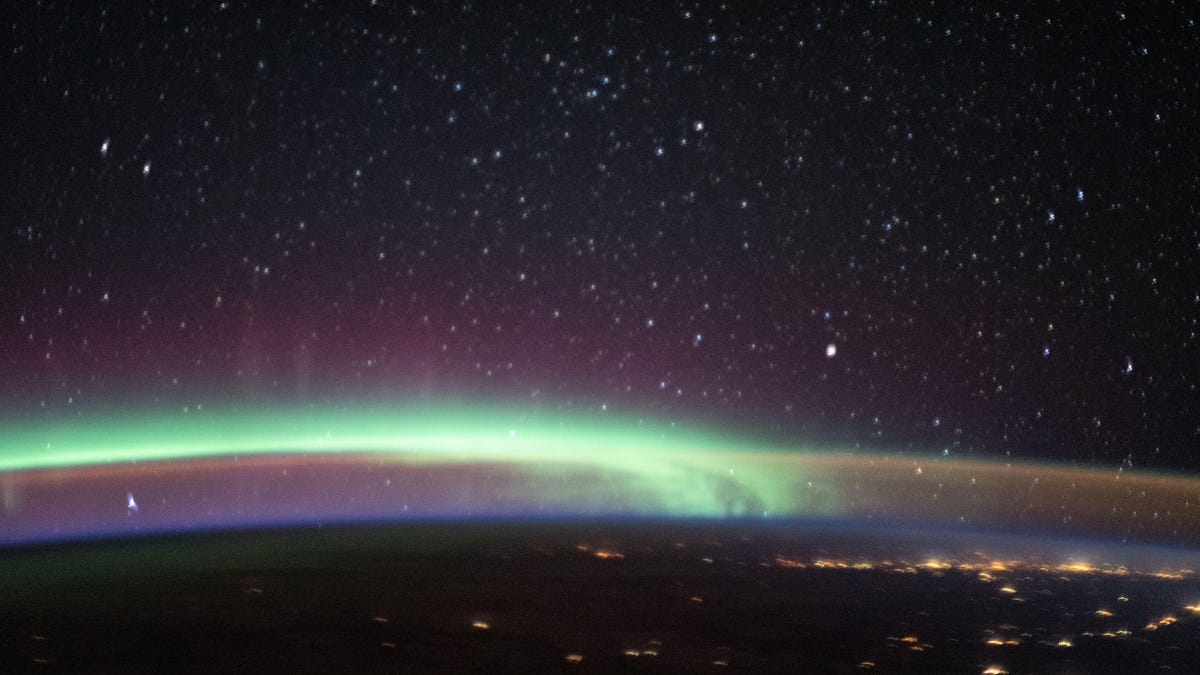NASA captures haunting view of aurora meeting airglow over Earth
Two atmospheric beauties meld together in one spectacular image.
Some images of Earth as seen from the International Space Station show a gentle, glowing curve of light over our planet. Some show wispy, ethereal (and often green) aurora. A spectacular ISS image shared by NASA shows both.
"Wavy green, red-topped wisps of aurora borealis appear to intersect the muted red-yellow band of airglow as the ISS passed just south of the Alaskan Peninsula," NASA's Earth Observatory wrote. The sparkling lights below mark cities in Canada while stars break the darkness above.
A NASA astronaut snapped the image in March and the Earth Observatory shared it as its Image of the Day on Sunday.
The two atmospheric phenomena may resemble each other when it comes to their locations and inner glows, but NASA pointed out how they stem from different sources.
Airglow comes from "the emission of light from chemical interactions between oxygen, nitrogen, and other molecules in the upper atmosphere." Auroras are the result of solar particles mingling with the Earth's magnetic field.
NASA has made a study of airglow. "It can help scientists learn about the movement of particles near the interface of Earth and space, including the connections between space weather and Earth weather," said NASA in a 2018 image release.
From a purely aesthetic point of view, both airglow and auroras are worthy viewing subjects. The combination of the two is all the more special.


